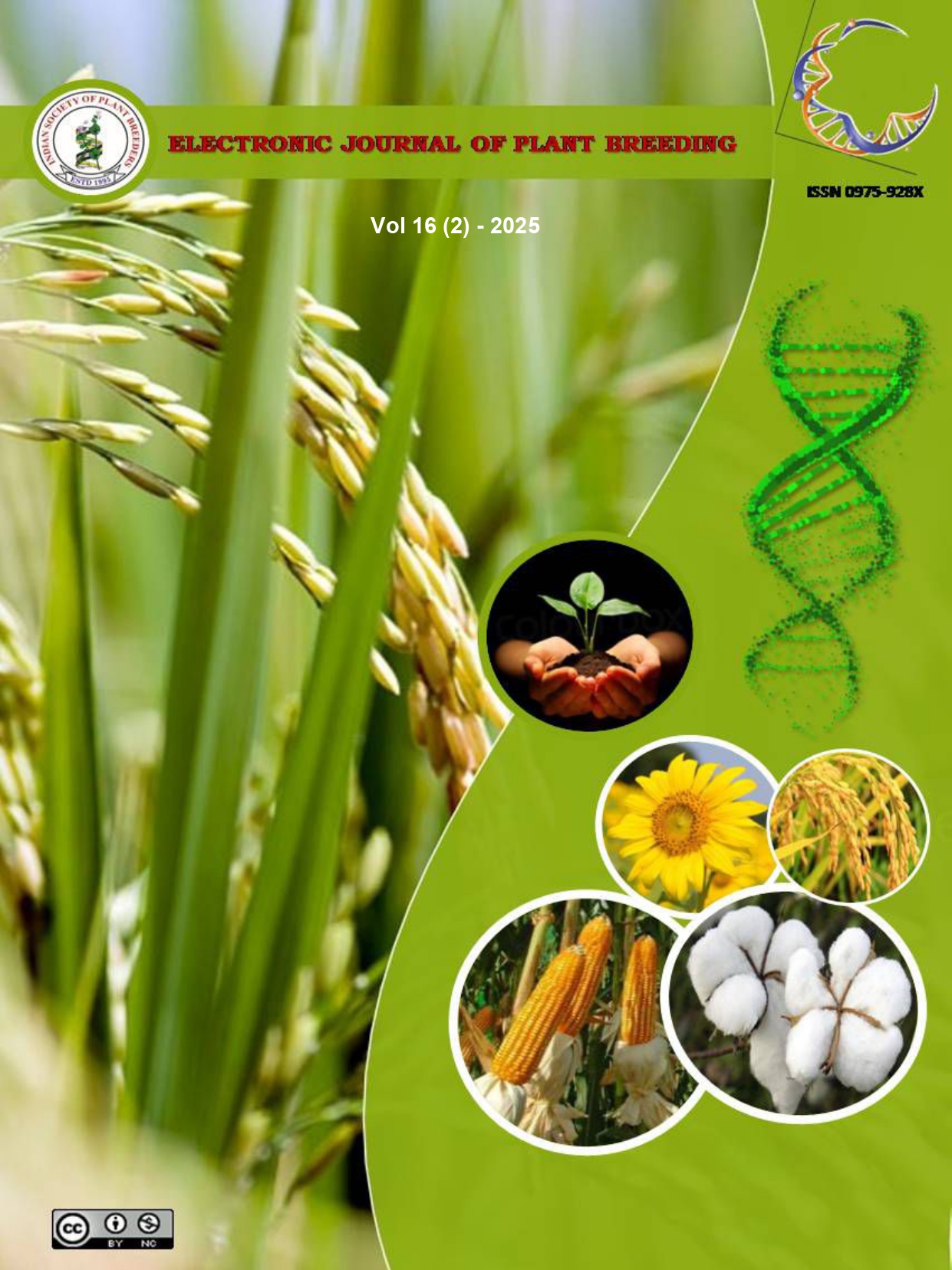Morphological characterization of strong culm traits and their association with yield performance in rice (Oryza sativa L.)
DOI:10.37992/2025.1602.020
Abstract
Lodging resistance is an important characteristic for enhancing the productivity and stability of rice (Oryza sativa). This study assessed the genetic variability of 81 rice germplasm lines from southern India, focusing on 12 traits contributing for culm structure and yield. A field experiment was conducted in a randomized block design, and the recorded phenotypic data were analysed employing descriptive statistics, variability estimates, correlation analysis, and Principal Component Analysis. The findings revealed high genotypic coefficient of variation and phenotypic coefficient of variation, along with high heritability and genetic advance for culm length of fourth internode, section modulus of fourth internode, and single plant yield. These results indicate strong genetic control and the potential for effective selection for culm traits. Additionally, SPY showed strong positive correlations with the number of productive tillers and hundred seed weight. Plant height, culm length, and culm thickness also exhibited strong correlations with section modulus of fourth internode, highlighting their importance in lodging resistance. The PCA identified three major components that explained 56.16% of the total variability, with culm related traits and yield traits being key contributors. These findings highlight the significance of culm morphology traits in breeding programs and provide valuable insights for parental line selection to enhance rice productivity and develop non-lodging cultivars.
Keywords: rice, culm strength, genetic variability, correlation, PCA
Morphological characterization of strong culm traits and their association with yield performance in rice Oryza sativa L.
. 2025. Electronic Journal of Plant Breeding, 16 2, 258-267. Retrieved from https://ejplantbreeding.org/index.php/EJPB/article/view/5325It is certified that:
- The corresponding author is fully responsible for any disputes arising due to the publication of his/her manuscript.
- The article has been seen by all the authors who are satisfied with its form and content.
- The sequence of names of authors in the by-line is as per their relative contribution to this experiment, giving due credit to all scientists who made notable contribution to it.
- All the authors fully understand that inclusion of any other co-authors or exclusion of any co-authors is not possible once the article has been submitted to the journal.
- The corresponding author takes full responsibility for this article.
- The address of the organization where the research was conducted is given.
- The article is exclusive for this journal, and the results reported here have not been sent (and will not be sent during its consideration by this journal) for publication in any other journal.
- Authors agree to abide by the objective comments of referees and do agree to modify the article into a short note as per the recommendation, for publication in the Electronic Journal of Plant Breeding.
- If published in Electronic Journal of Plant Breeding, the copyright of this article would vest with the Indian Society of Plant Breeders, who will have the right to enter into any agreement with any organization in India or abroad engaged in reprography, photocopying, storage and dissemination of information contained in it, and neither we nor our legal heirs will have any claims on royalty.



